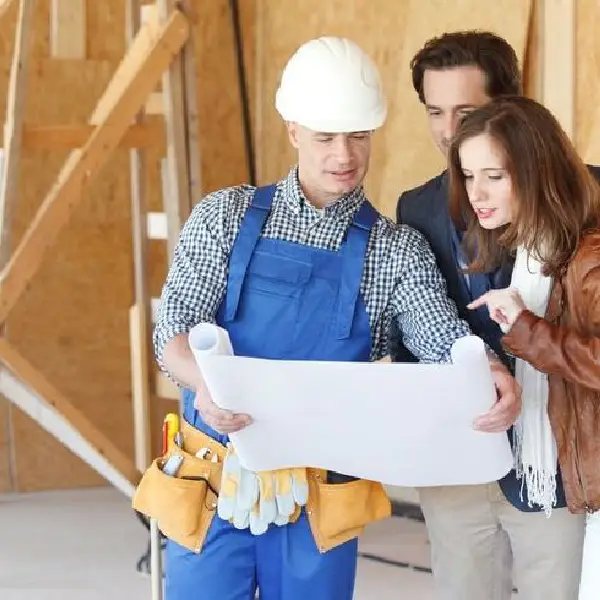Peeling Back Layers: Structural vs. Home Inspection

It's critical to understand the distinction between structural inspection vs. home inspection before purchasing or selling a property.
We'll discuss the distinctions between a structural and a home inspection in this blog post, as well as how each one impacts you as a buyer or seller.
Before that, you should have basic information about home inspection. If you do not know anything special about it, click on the what is home inspection article to find out.
Purpose
Structural and home inspections, each have a special purpose which we have mentioned below:
- Structural inspection purpose: Determining a building's structural soundness and integrity is the main goal of a structural examination. This entails inspecting the foundation, walls, floors, and other visible and accessible areas of the structure for any indications of distress, degradation, or damage, such as cracks, movement, bowing, or inappropriate connection. A building's structural integrity and safety are evaluated critically through structural inspections.
- Home inspection purpose: Home inspections make buyers feel more at ease knowing that the home they are purchasing is stable and clear of any significant problems. Inspections can also be used by sellers to show that the property is in good condition or to point out areas that require repair.
Of course, there is another type of inspection called foundation inspection. If you like to have more information about it, click on the foundation inspection article.
Scope
- Structural inspection scope: The particular sections and elements of a building or structure that will be examined for any possible problems or flaws are referred to as the structural inspection scope. This can include structural components including the walls, floors, roof, framework, and foundation.
- Home inspection scope: A comprehensive assessment of a home's structural elements, external features, roofing, plumbing, electrical, heating and cooling systems, insulation, ventilation, and interior features are usually included in the scope of a home inspection.
Timing
- Structural inspection timing: For a standard-sized house, the inspection can take around 1-2 hours. However, larger or more intricate structures may require up to 3 hours or more.
- Home inspection timing: A 2,000-square-foot house may be thoroughly inspected in two to three hours on average. You should allow an extra half an hour for every 500 square feet that is added.
Focus Areas & Issues
- Structural inspection focus: A structural inspection's primary goals are the load-bearing components of a building, such as the foundation, walls, floors, roofs, beams, columns, and other supporting structures. Additionally, it may have concerns with the roof structure, sagging floors, sloping walls, bending walls, and evidence of insect or water damage. It may also have foundation problems such as shifting, heaving, or deep cracks.

image sourced from here
- Home inspection focus: The home's electrical panel, wiring, outlets, lighting, water supply, drainage, and fixtures to guarantee the electrical system is safe and up to code. Cracks, settling, sagging, or other indications of problems should be fixed.
Click here for more information about focus areas in home inspection.
Who To Hire
- Structural inspector: The best-qualified expert to check structural problems is a structural engineer. They possess the knowledge and experience necessary to recognize any issues, evaluate how serious they are, and suggest fixes.
- Home inspector: When it comes to examining structural problems, a house inspector is the most trained specialist. Give credentials and expertise top priority when selecting a home inspector. Seek for inspectors with certification from respectable associations.
Report Details
- Structural inspections report: The state of the foundation, including any deterioration indicators such as cracks or settlement, and the state of the roof, including any deterioration indicators such as missing shingles or leaks. The state of the walls, floors, and beams, are also included in the report. This might entail evaluating the building techniques, the materials utilized, and any wear or damage indicators.
- Home inspections report: A thorough assessment of the state of a property, including its structural integrity, electrical, plumbing, HVAC, roofing, insulation, and other components, is usually included in the report detailing house inspections.
Structural Inspection vs Home Inspection Cost
- Structural inspection cost: Depending on the house, the average cost of a structural engineer examination might vary, however, it often ranges from $300 to $2,000.
- Home inspection cost: A house inspection typically costs between $300 and $500. The age, location, and size of the house can all affect this cost.
Importance
- Structural inspection importance: Building safety and integrity must be maintained through structural examinations. They assist with the early detection of any issues, averting expensive repairs, and guaranteeing the safety of residents.
- Home inspection importance: A home inspection is essential because it gives buyers and sellers important information about the state and any problems with the property. Before marketing their property, sellers may use it to find and fix any issues, and purchasers can use it to make well-informed judgments and safeguard themselves against unanticipated issues.
Which Inspection Do You Need?
Now the question is: Which one do you need; a structural or a home inspection?
Below there is a table that helps you easily understand which one is best for you:
Conclusion
Finding the difference between structural inspection vs. home inspection might seem like a hard job to do. If you are wondering how to distinguish them, no worries.
In this article, we have mentioned some of the most important differences in structural and home inspection, including their cost, timing, focus areas, report details, etc.
Pay attention to the table at the end of the article if you do not know which inspection is necessary for you.
- In this post:
- Purpose
- Scope
- Timing
- Focus Areas & Issues
- Who To Hire
- Report Details
- Structural Inspection vs Home Inspection Cost
- Importance
- Which Inspection Do You Need?
- Conclusion



